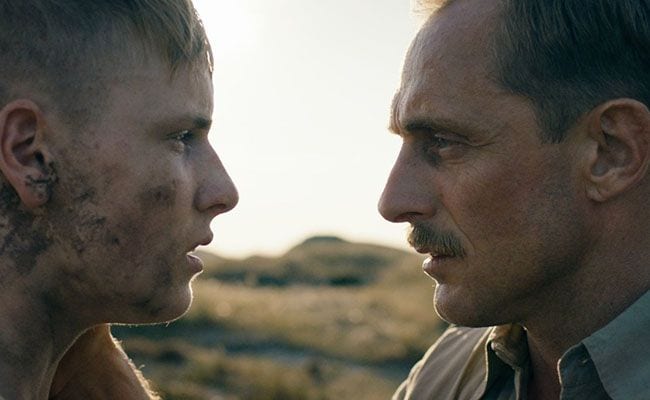
The beach at magic hour — when the sun cascades over magnificent dunes and the tide crashes against the shore — offers a gloriously ethereal escape. Such a scene offers a perpetually elusive promise of fresh sea air, all night parties and eternal youth. A World War II film set on the beaches of Denmark, Martin Zandvliet’s Land of Mine (Under sandet) destroys such images of beauty. It’s as powerful a denunciation of nationalism’s destructive force as one will see in 2017.
The movie reminds us that, after Denmark was liberated from German occupation near the end of the war, the Danish military deployed several thousand Nazi prisoners of war to remove 1.5 million live landmines the Nazi army had planted across the Danish beachfront. Repeatedly, Danish officers declare the justice of their order, claiming that bad people planted these mines and now bad people will remove them. But Land of Mine complicates this seemingly symmetric objective in order to reveal a more frightening truth: that this claim also served as cover for a form of sadistic punishment.
Early in the film, a sequence of close-ups introduces a small platoon deployed to remove 40,000 mines from a beach, revealing a number of captured teenage POWs. Beneath the bruises and scrapes marking whatever hell these boys survived, their faces are soft and their eyes fearful. Even after their military experience, they are too young to be hardened by war or to accept the prospect of death.
As they look at the beach where they’re going to work, these teenagers’ expressions are of abject fear. Certainly, other war movies have depicted beachfront battle zones, but in those cases, the action is swift and cacophonous. Moreover, we can assume the fighting will stop, that an aftermath will provide quiet or a time for reflection. Here, however, the quiet beach serves as the beginning of another assault, conducted during peacetime.
When the platoon of boys first encounters the beach, it’s not only serene in its beauty, but also magnificent. Cinematographer Camilla Hjelm presents the landscape with an eye for splendid detail, as well as long takes and captivating wide shots of sand under golden skies. When the horizon turns cloudy, the whiteness and softness of the sand is punctuated by the deep blue ocean. Everything seems tranquil. Against this backdrop, however, the platoon’s mission is even more disturbing.
The beauty and silence are underlined by the film’s lack of musical score. Absent emotional guidance from such audio embellishments, the audience absorbs what’s haunting each teenager, as they anticipate what seems inevitable even as they resist the thought, that one or a few of those mines they will be forced to remove from the beach is likely to explode. Repeated close-ups of various POWs’ faces — no one’s story is favored over the next — suggest they share this thought even as they dare not speak it. With each step, we hear the sound of crushed sand, the wisp of wind, the rustling of reeds. The tragedy in Land of Mine is that this calm might end at any moment, whether because a loud wave crashing might lead to a fatal miscommunication or a misstep might trigger an explosion.
Some of the figures have names and titles. The young platoon is commanded by an anti-German nationalist, Sgt. Carl Rasmussen (Roland Moller), who adopts a staggering cold-bloodedness. As we see Rasmussen from the youths’ perspective, he appears an intransigent company man. At night, his charges sleep in a barn on bunks made of straw. In the mornings, they wake up to little to no food. Then they go to clear 500 landmines on the beach, and they return to the barn, again without food. Some beging to show symptoms of starvation. When a few of the kids speak up to Rasmussen, be it for food or an hour to rest, they are met with verbal abuse. One boy reasons that they can’t do their work effectively if they’re starving and distracted by their physical debilitation, but his plea meets no mercy.
Land of Mine is not nearly as emotionally effective when it shifts focus to Rasmussen’s growing sympathies for the POWs, a shift that offers viewers relief from the weight of seeing so much suffering. But this predicable plotline changes the film’s bleak verité to a romance featuring an anti-heroic savior. The audience doesn’t need Rasmussen as an emotional vehicle. Seeing the boys suffer through his commands makes the point clearly enough — his authority reflects nationalistic vengeance.
When Rasmussen finally begins to show his troops some compassion, Land of Mine doesn’t strain for spiritual uplift. Rather, it leaves the audience with the feeling that even if he has finally decided to act decently toward the boys, the system that has produced him remains intact. Here and elsewhere, Land of Mine considers the risks of wartime nationalism and brutality, their effects on multiple sorts of victims, and their effects on the natural world.

